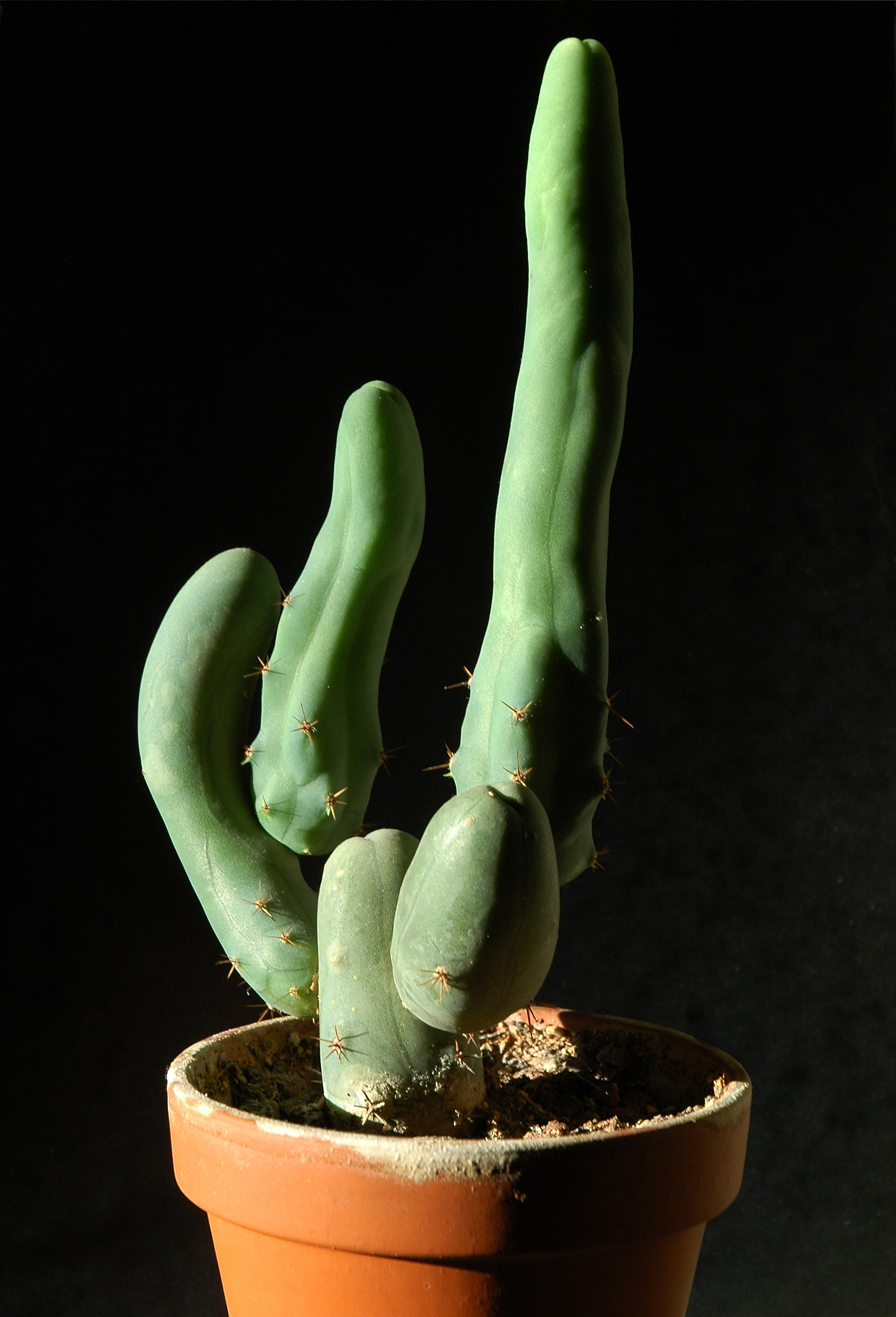- Penis Plant
Taxobox
name = Penis Plant

image_width = 200px
regnum =Plant ae
divisio = Magnoliophyta
classis = Magnoliopsida
ordo =Caryophyllales
familia =Cactaceae
genus = "Echinopsis "
species = "E. lageniformis"
trinomial = "E. lageniformis" f. "monstrose"The Penis Plant, also known as the Penis Cactus, is amonstrose form of "Echinopsis lageniformis ". This plant is more commonly referred to as "Trichocereus bridgesii ", even though the current scientific name is "Echinopsis". Contrary to the typical columnar habit of the species, thiscultivar displays short stem sections that branches avidly, forming a low spiny bush. The upper part of each stem segment is smooth and spineless, resembling apenis . The lower part is spiny and shows a tendency to form ribs. The plant is of light green color.The German name for this cultivar, "Frauenglück", is more euphemistic than its English equivalent; it translates as "Women's Pleasure".
Chemistry
The chemical composition of "E. lageniformis" 'Penis Plant' is allegedly the same as that of the typical form of the species.Fact|date=February 2007
References
* K. Trout, "Trout's Notes on San Pedro and related Trichocereus species (Sacred Cacti 3rd ed. Part B)" (Moksha Press, 2005) ISBN 0-9770876-0-3, p.28.
External links
* [http://lophophora.blogspot.com/2005/10/how-penis-cactus-got-its-name.html "How the Penis Cactus got its name"]
* [http://davesgarden.com/pf/go/127220/index.html " Echinopsis bridgesii f. monstrosus at davesgarden.com"]
* [http://www.travellersgarden.com/productinfo.php?category=4&subcategory=0&productmain=843 " Echinopsis bridgesii f. monstrosus at www.travellersgarden.com"]
Wikimedia Foundation. 2010.
